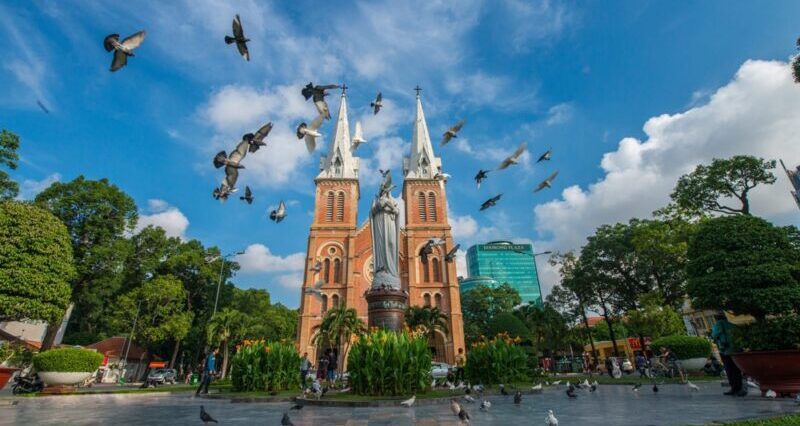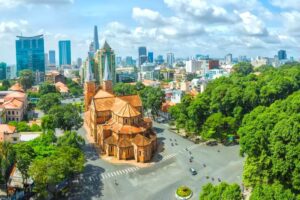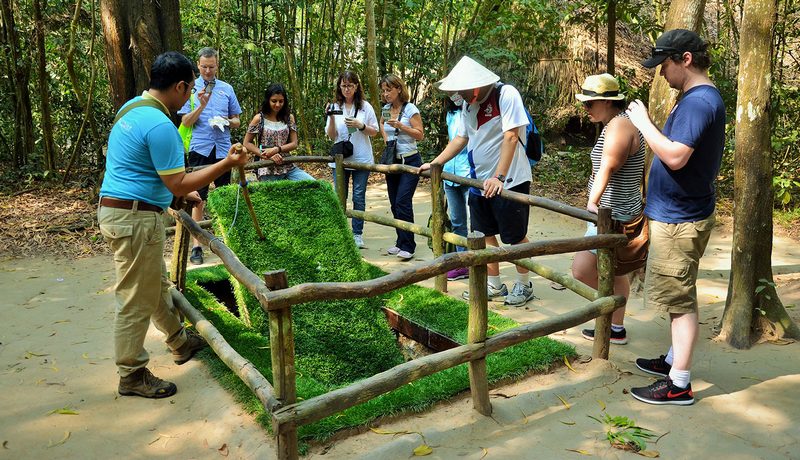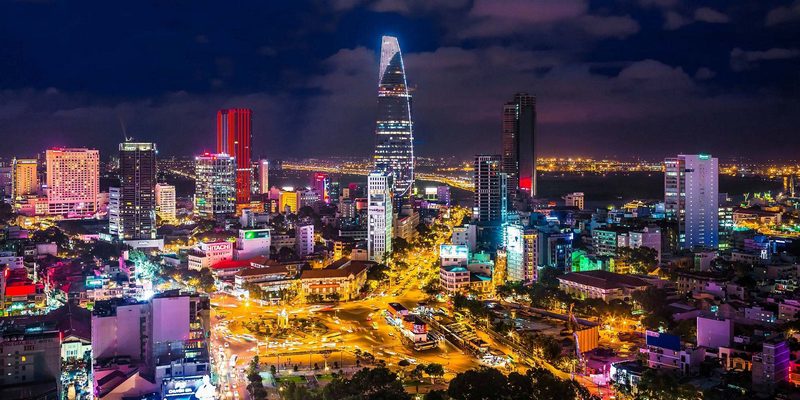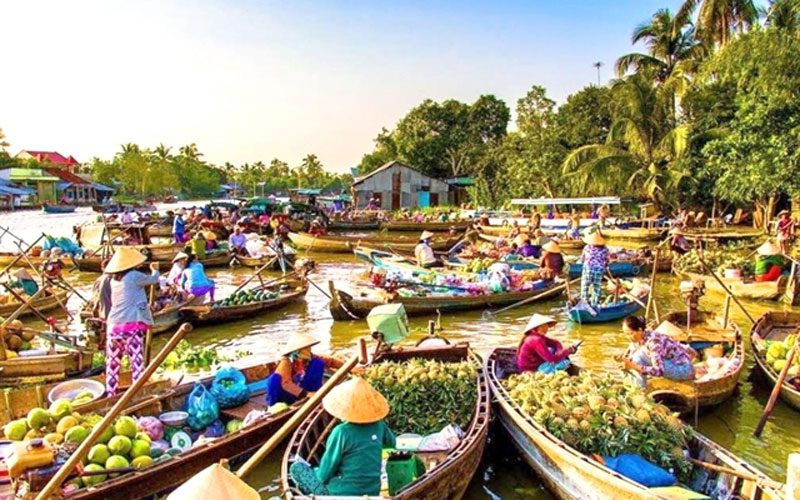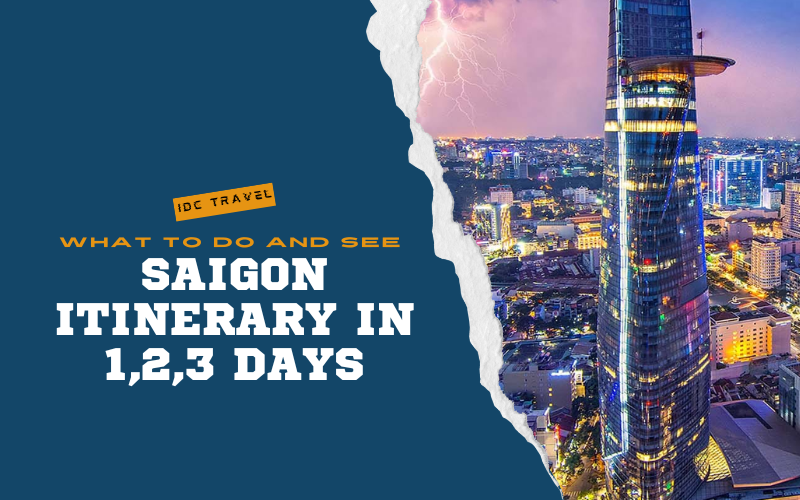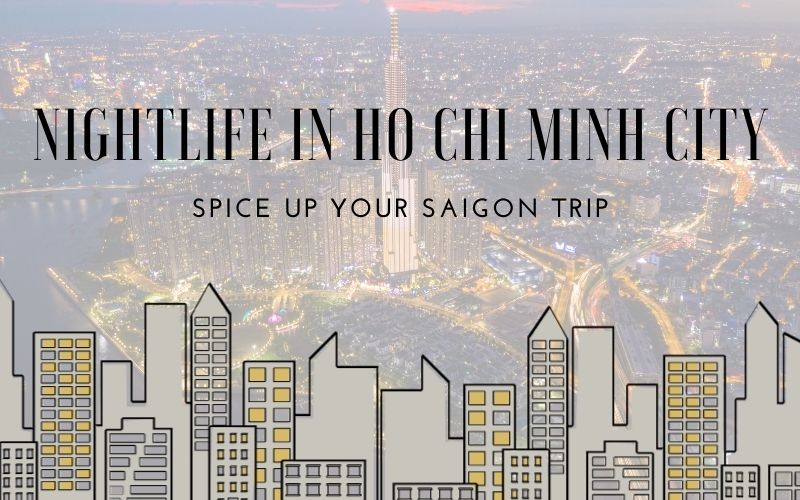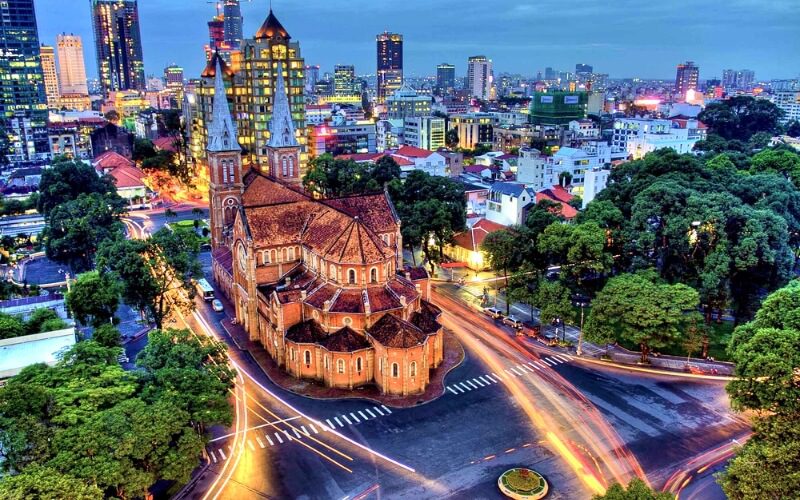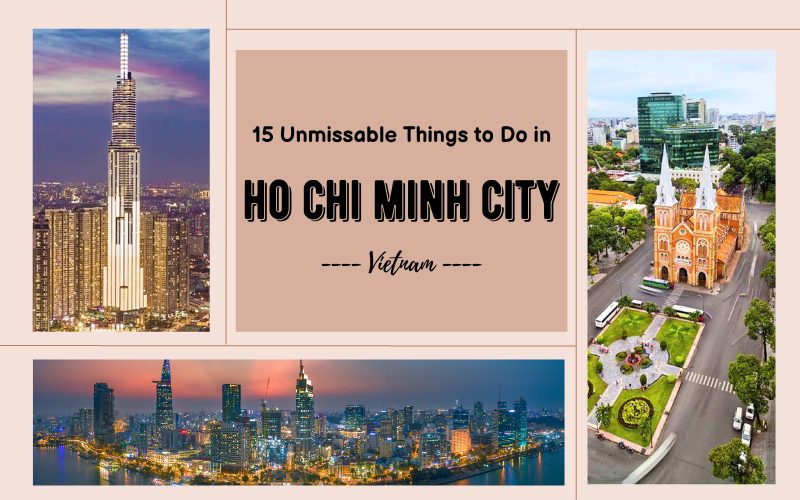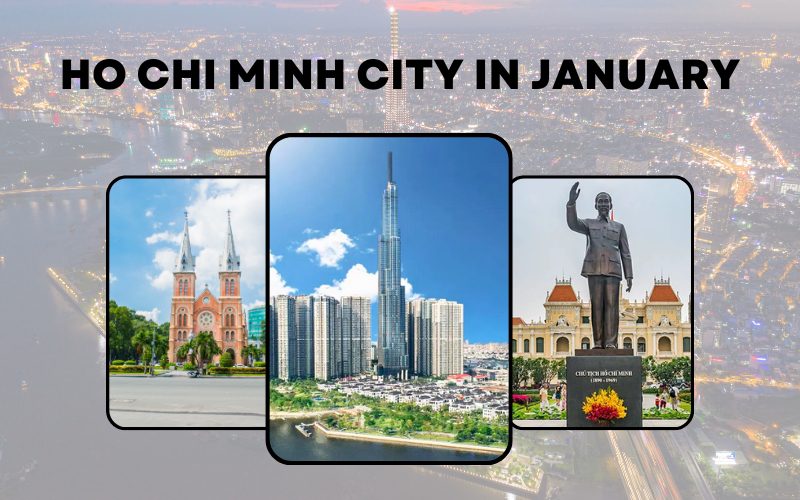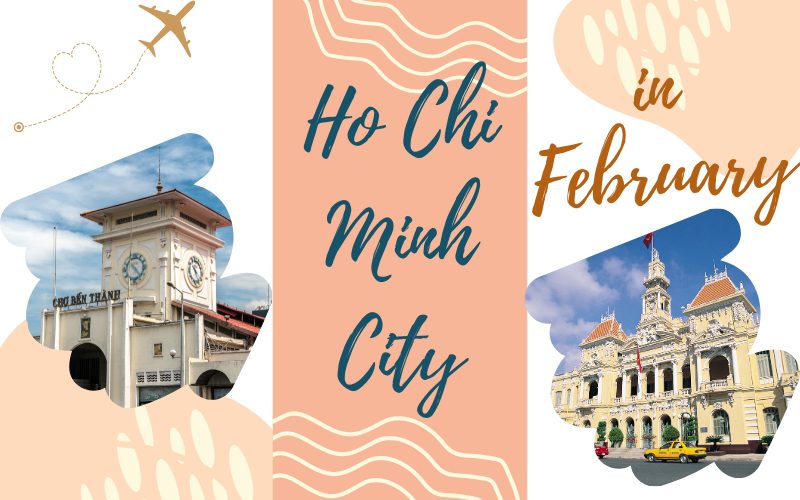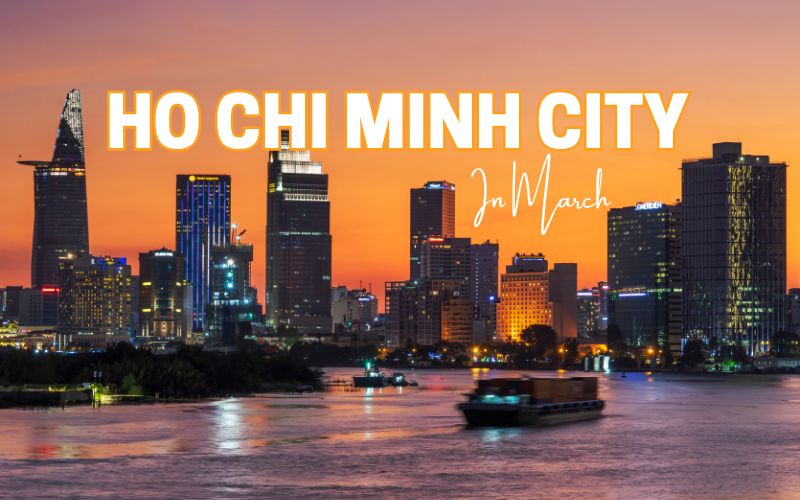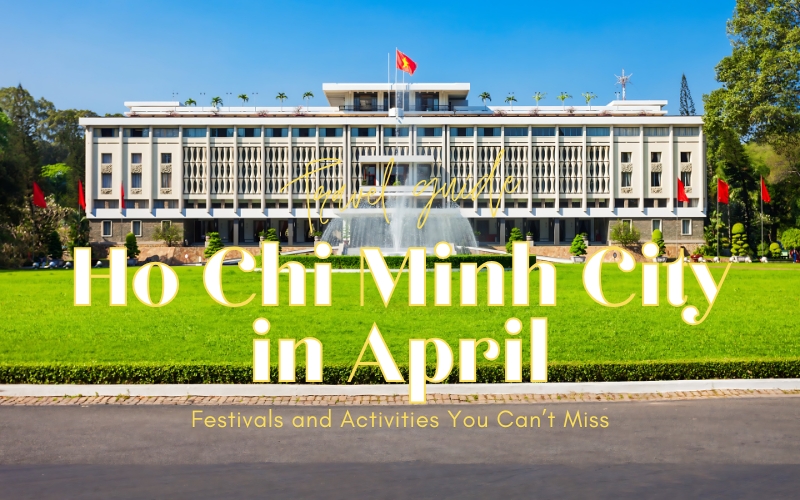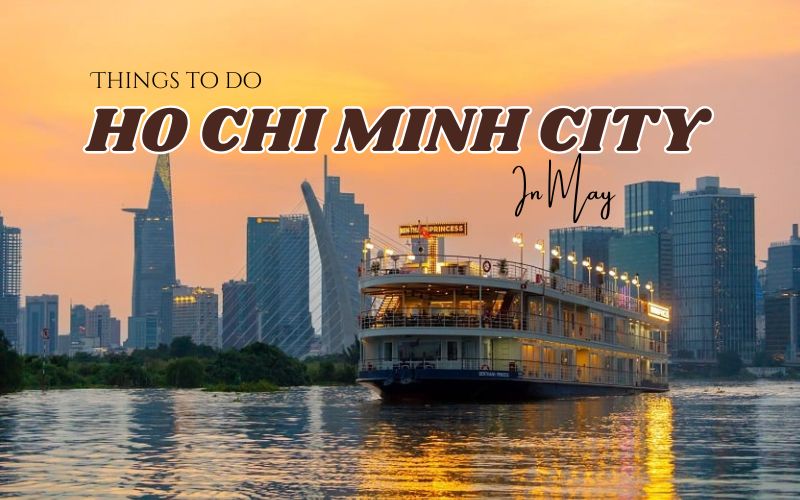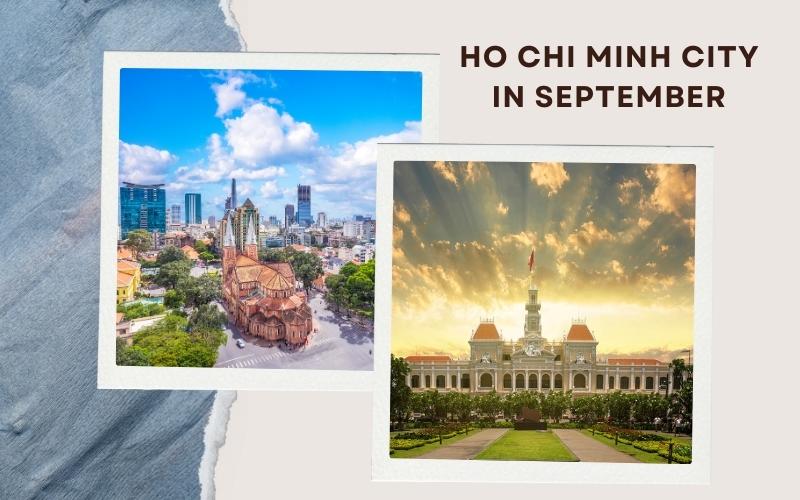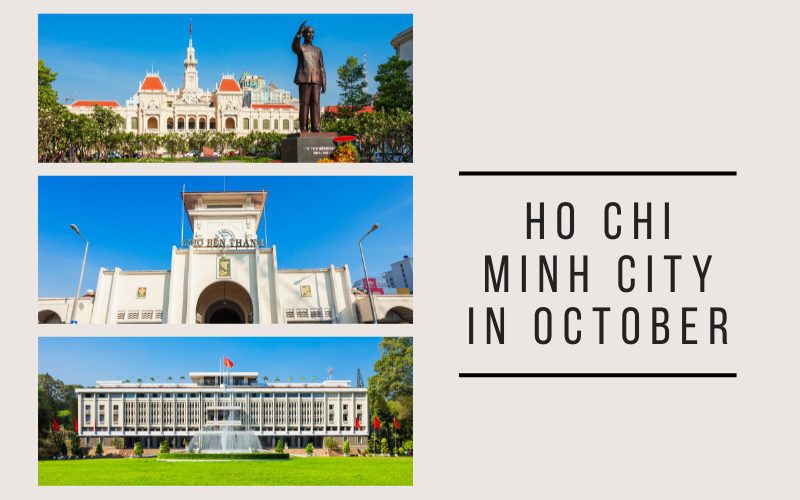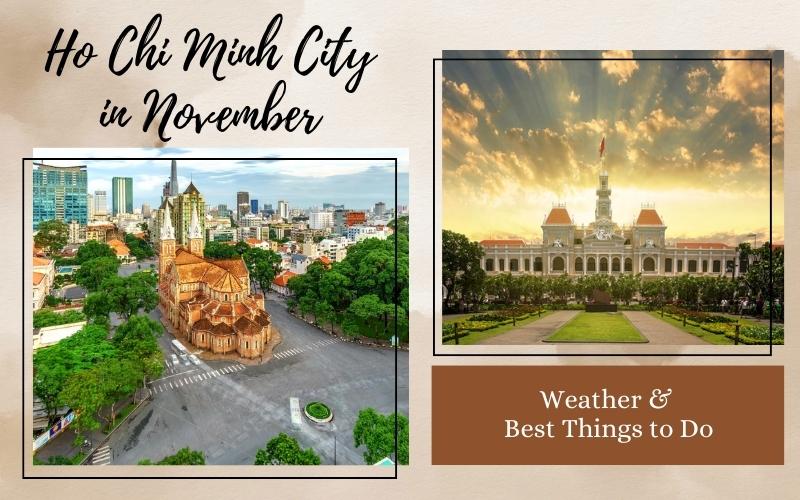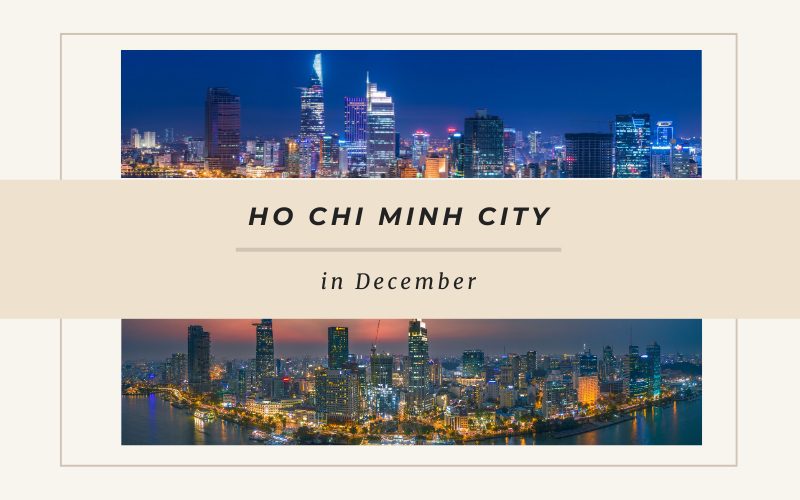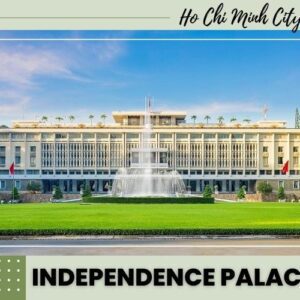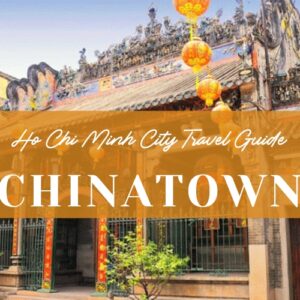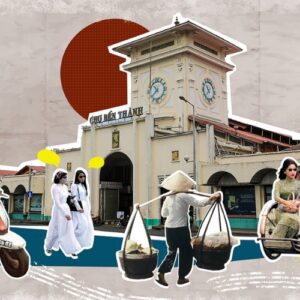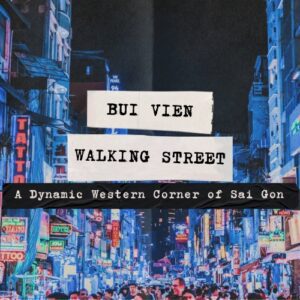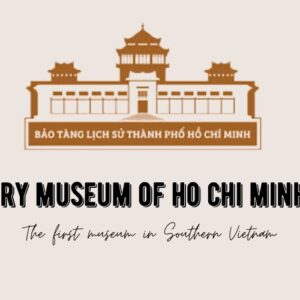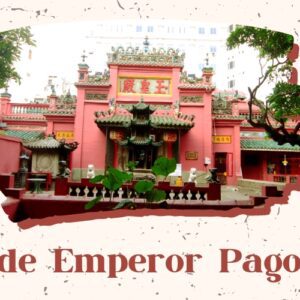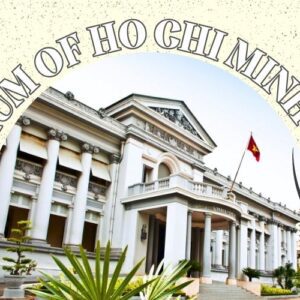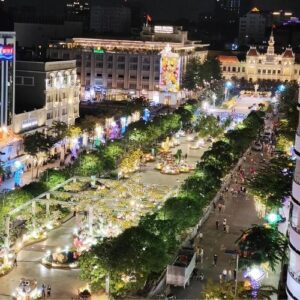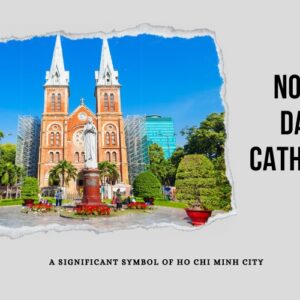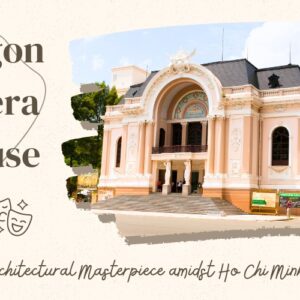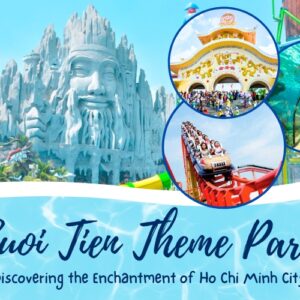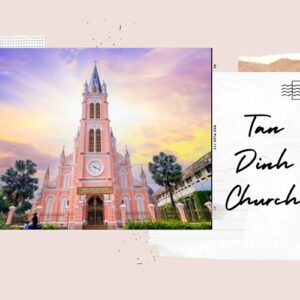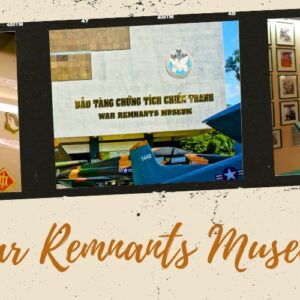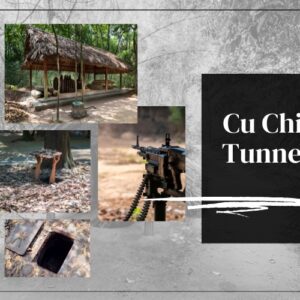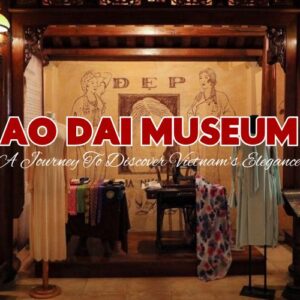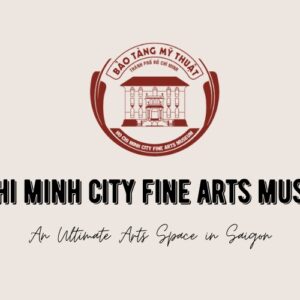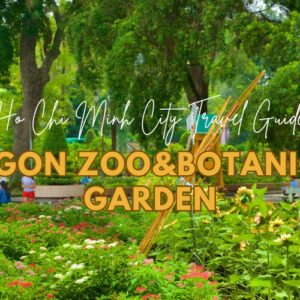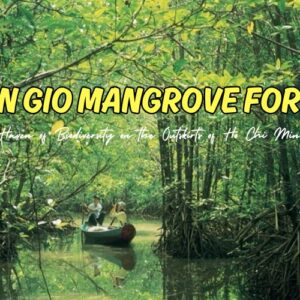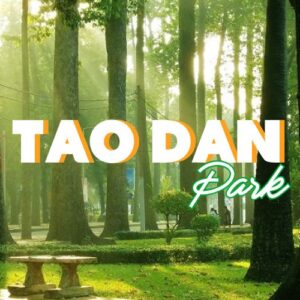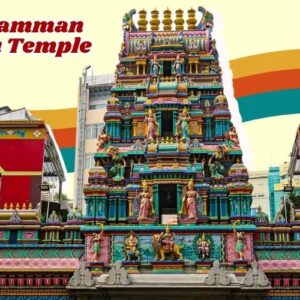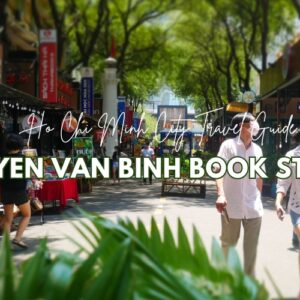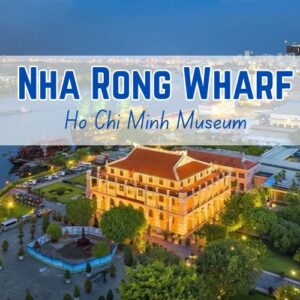This guide takes you through the newly expanded Ho Chi Minh City, which officially merged with Vung Tau in early 2025 to form a single, dynamic destination. Now stretching from the bustling streets and historic landmarks of Saigon to the sandy beaches of Vung Tau, the city offers a seamless blend of urban excitement and coastal relaxation. Visitors can dive into the vibrant nightlife and rich cultural heritage of the metropolis, then be at the ocean’s edge in just a short drive, experiencing two distinct sides of southern Vietnam in one journey.
General Information
Ho Chi Minh City – still commonly known as Saigon by locals – is the largest and most vibrant urban centre in Vietnam. Following its recent administrative merger with Vung Tau and Binh Duong, the city now stretches from the dynamic, high-rise hub of southern Vietnam to the cool coastal charm of one of the country’s most popular coastal cities. This new expansion makes Ho Chi Minh City more diverse than ever, offering visitors the chance to experience urban life and relaxing seaside living in one destination.
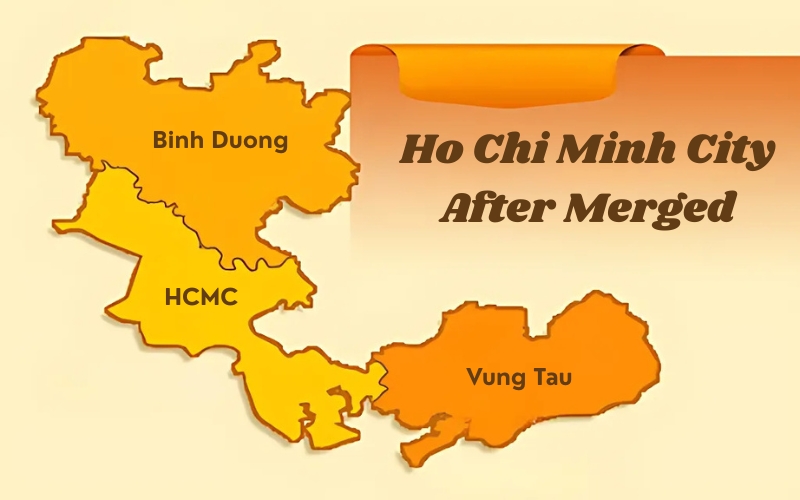
Ho Chi Minh City map after merged
With a population of over 10 million, the greater Ho Chi Minh City area is a cultural, commercial and culinary hub. The city center is always energetic with bustling traffic, colorful markets, rooftop bars and French colonial buildings. Meanwhile, just a two-hour drive away, Vung Tau has a completely different pace of life, with relaxing beaches, seafood restaurants and beautiful coastal roads, perfect for a weekend getaway or a relaxing day trip.
Thanks to its strategic location, Ho Chi Minh City is also an important transport and commercial hub, providing easy access to the Mekong Delta, Central Highlands or neighboring Cambodia.
Weather & Best Time to Visit Ho Chi Minh City
Now encompassing the bustling urban landscape of Ho Chi Minh City and the coastal charm of Vung Tau, this newly expanded province offers a combination of tropical urban energy and relaxing coastal spaces – all shaped by the warm, humid climate typical of southern Vietnam. The city has an equatorial climate with two seasons: wet and dry. The hottest months are from March to May, while the rainy season lasts from May to October. Although Ho Chi Minh City has no winter, the influence of the northeast monsoon, which causes winter in northern Vietnam, can cause temperatures in Saigon to drop to 18 to 20 degrees Celsius in December and January.
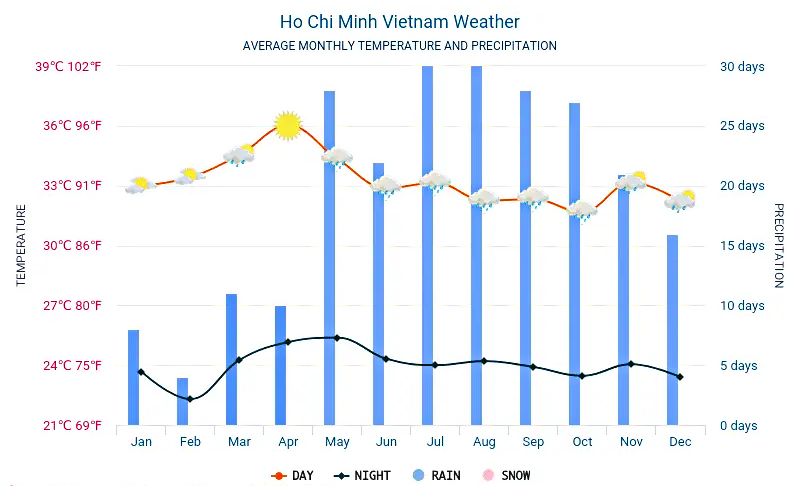
Ho Chi Minh weather
During the dry season, the weather is hot but pleasant, with plenty of sunshine and little rain – perfect for sightseeing, cruising along the Saigon River or enjoying a day at the beach in Vung Tau. Temperatures typically range from 28°C to 35°C, with cooler evenings, especially along the coast. The rainy season brings short, heavy afternoon showers that freshen the air and add a tropical touch to the lush vegetation in both urban and coastal areas. While the rain can disrupt outdoor activities, it rarely lasts long, and the area remains vibrant and bustling even during the wet months.
Generally, visitors can explore Ho Chi Minh City at any time of the year, but for the most comfortable travel experience, the ideal time to visit is from December to March, when the skies are clearer and the humidity is lower. This is also the festival season, with vibrant festivals such as the Lunar New Year adding colour and energy to every corner of the province. From June to August, visitors can still safely visit this city as the rains are short and will not disrupt your trip.
Getting to Ho Chi Minh City
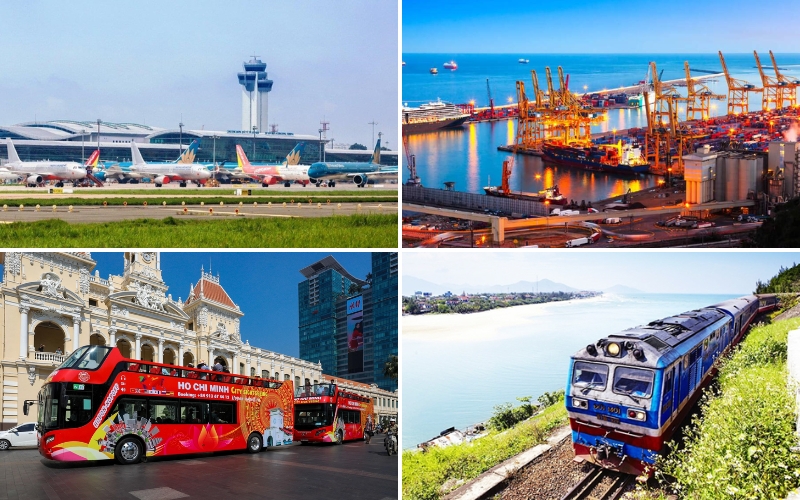
Some of the main transportations of HCMC
As the largest hub in the south of Vietnam, Ho Chi Minh City is one of the easiest destinations in the country, and with its recent merger with Vung Tau, visitors can now reach it via both urban gateways.
By air
Tan Son Nhat International Airport (SGN) is one of the two main air hubs, along with Noi Bai International Airport. There are numerous daily flights between Ho Chi Minh City and major cities in Vietnam, including Hanoi, Hue, Da Nang, Nha Trang, Da Lat, Phu Quoc and others. You can combine a visit to Ho Chi Minh City with trips to the Mekong Delta, Phu Quoc and Vung Tau as part of your Southern Vietnam tour. Direct flights are also available between Ho Chi Minh City and major cities in the United States, Europe, Australia, Japan and other Southeast Asian countries.
By sea
Vung Tau is a popular destination for international tourists travelling by sea, especially cruise ships. Now that Vung Tau is part of Ho Chi Minh City, visitors can arrive by cruise ship whether from other countries or neighboring coastal provinces, and can dock at Cai Mep – Thi Vai port before entering the city.
By road
Ho Chi Minh City is connected to all major cities in the South via modern expressways. From the Central Highlands or the Mekong Delta, buses and private shuttle services are frequent and reliable. If you are coming from the coastal areas of Binh Thuan or Phan Thiet, newly improved road routes via Vung Tau will make the trip even quicker.
By train
There are many trains running between Ho Chi Minh City and other cities in Vietnam every day such as Hanoi, Nha Trang, Da Nang, Hue, Quang Binh, Quang Tri,…. Although the travel time will be a bit longer, this is a quite interesting way to travel, helping you save money and can see more beautiful scenery of Vietnam on the way.
Getting around Ho Chi Minh City
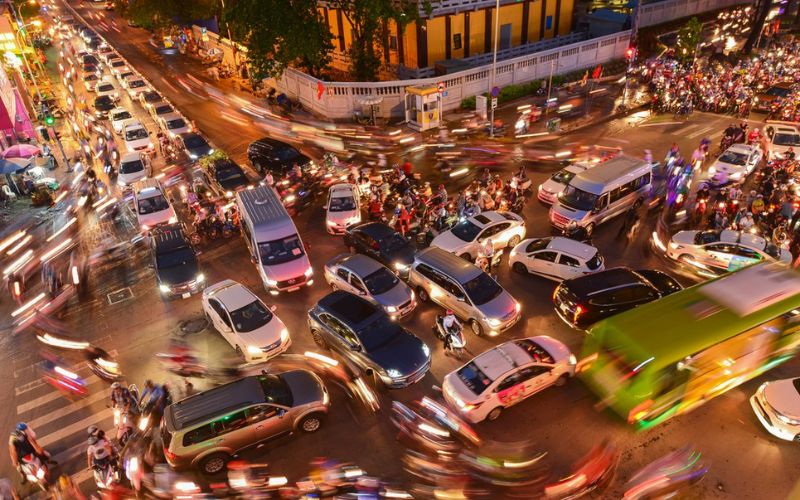
Traffic in Saigon during rush hour
In the city center
For the central districts, options include taxis, ride-hailing apps like Grab and traditional cyclos for short trips. You can use public buses for very cheap prices or walk if you feel comfortable (but be careful when crossing the street because the traffic is quite chaotic). For a more local experience, you can rent a motorbike, free to explore the city at your own pace and its hidden corners.
To the coastal districts (old Vung Tau)
Visitors can reach the beach areas in about two hours by express car or bus. For a more scenic journey, you can choose the express ferry that runs directly from Bach Dang Wharf in the center of Ho Chi Minh City to Vung Tau ferry terminal, giving you sea views along the way. We recommend renting a private car with a driver, so you can move freely on your schedule, whether in the city center or to the coastal areas.
Places to visit in Ho Chi Minh City
As one of the most stimulating destinations in a trip to Vietnam, Ho Chi Minh City contains many ancient pagodas, skyscrapers, markets, shopping malls, and museums for you to discover. Most attractions and entertainment in the city concentrated in District 1.
Reunification Palace (or Independence Palace)
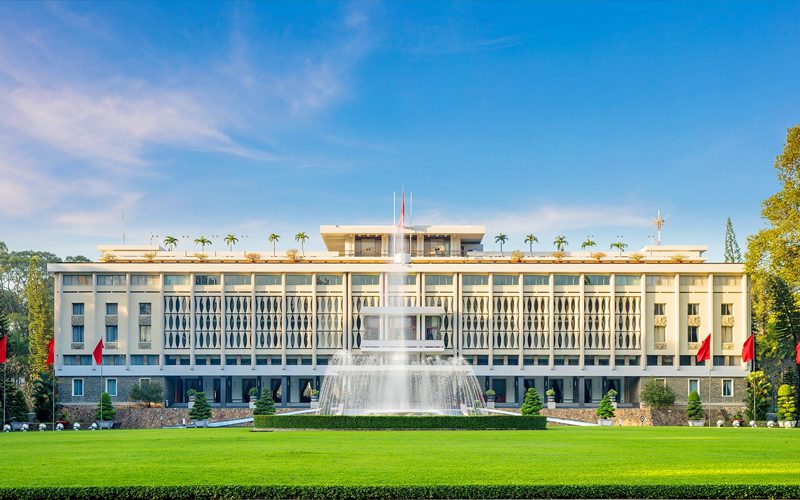
Independence Palace – Ho Chi Minh City
The former Independence Palace was built in 1973 by a Vietnamese architect called Ngo Viet Thu. Formerly the Norodom Palace, it was then used by the Governors-General of French Indochina. Ngo Dinh Diem used it from 1956 as a presidential palace.
During the Vietnam War, the palace was damaged by bombing. Ngo Dinh Diem then decided to demolish it and built the current building. Today, the palace remains as it was during the fall of Saigon on April 30, 1975, when the tanks of the North Vietnamese army destroyed the entrance gate and forced the president of Southern Vietnam to surrender.
- Location: 135 Nam Ky Khoi Nghia, Ben Thanh Ward, District 1
- Opening hours: 08:00 – 17:00, Monday to Sunday
- Entrance fee: VND 40,000 (adults); VND 10,000 (children)
Saigon Notre-Dame Cathedral
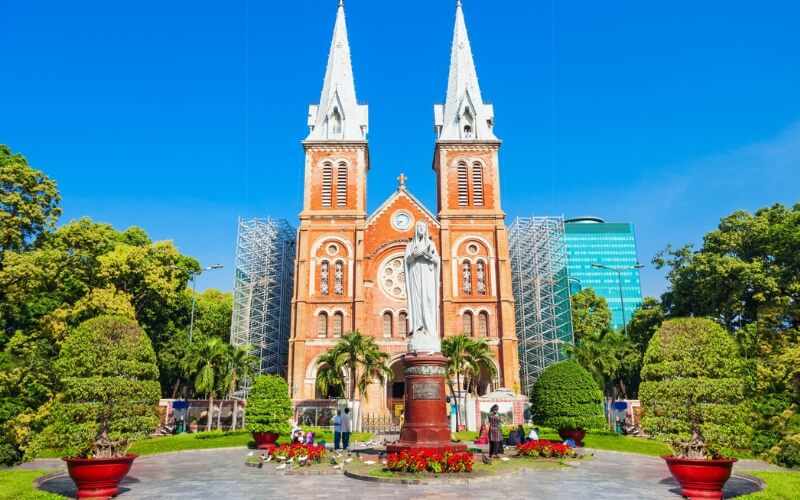
Notre Dame Cathedral
Built-in 1880 by the French, the cathedral is located in the center of Ho Chi Minh City. It includes two high towers of 55 meters and six bronze bells. All materials were imported from France, including red bricks from Toulouse, giving the cathedral a brilliant color.
- Location: 1 Cong Xa Paris, Ben Nghe Ward, District 1
- Opening hours: 8:00 AM – 11:00 AM and 2:00 PM – 4:00 PM daily (subject to change during ongoing renovations)
- Entrance fee: Free
Saigon Opera House
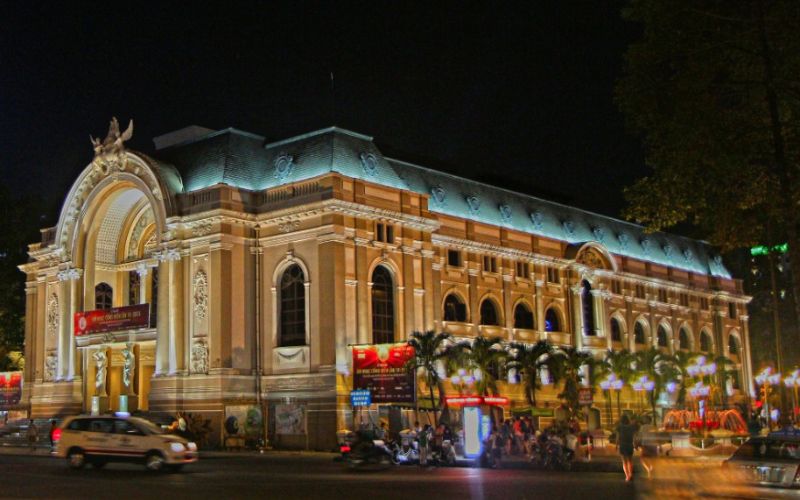
Saigon Opera House
Saigon Opera House, like the Hanoi Opera House, is largely inspired by the Opera Garnier in Paris. Built-in 1897, the opera contains 1800 seats and offers a wide variety of shows and concerts.
- Location: 7 Lam Son Square Street, Ben Nghe Ward, District 1
- Entrance fee: Varies based on the show, seating section, and time.
Saigon Central Post Office
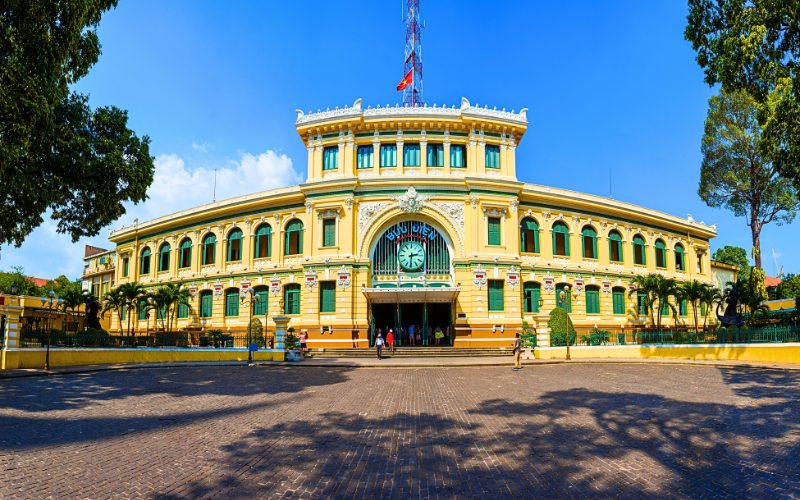
Saigon Central Post Office
Located next to Notre Dame Cathedral, the Saigon Central Post Office was built at the beginning of the 20th century. The connoisseur’s eye will immediately recognize the style of the metal frame which was designed by Gustave Eiffel when visiting this site.
- Location: 125 Cong Xa Paris, Ben Nghe Ward, District 1
- Opening hours: Monday to Friday: 7 AM – 5 PM. Saturday – Sundat: 7 AM – 6 PM
- Entrance fee: Free
Ben Thanh Market
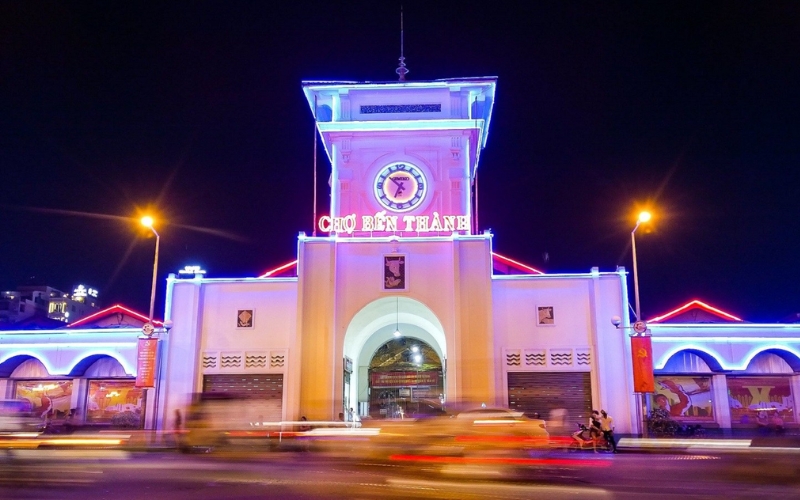
Ben Thanh Market at night
Ben Thanh Market, located in the center of the city, is the place where you can buy lots of souvenirs and go shopping. There are many clothing, handicrafts, jewelry, hats, shoes, and food vendors at the market. However, you should bargain hard whenever visiting a local market in Vietnam.
- Location: Quach Thi Trang Square (on Le Loi Boulevard), Ben Thanh Ward, District 1, Ho Chi Minh City
- Opening hours: Day Market: 6:00 AM – 6:00 PM daily (indoors). Night Market: Outdoor stalls open from ~6:00 PM to around 10:00 PM
Ho Chi Minh City Museum
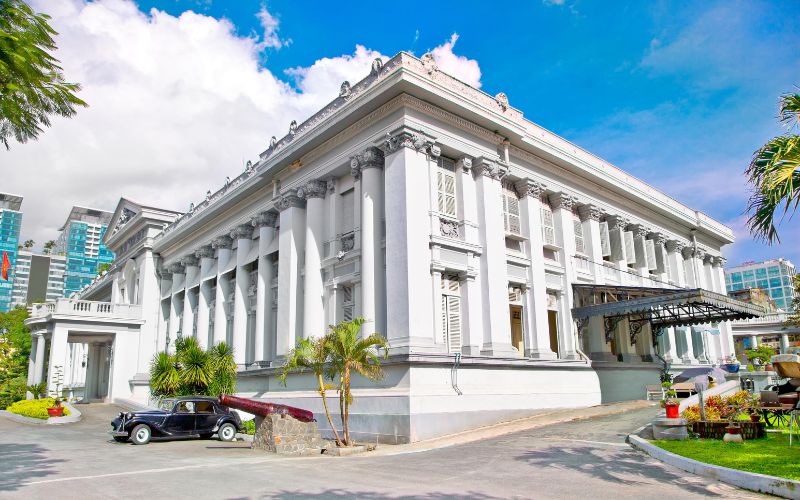
Ho Chi Minh City Museum
Formerly Gia Long Palace (and later the Revolutionary Museum), this museum contains precious information about various wars in Vietnam. Outside the museum are old American planes, a tank, and a UH-1 helicopter. Inside the museum is a collection of relics dating from different wars in Vietnam (medals, weapons, maps, etc.). There are also plenty of Buddhist antiques, archaeological artifacts, and marriage rituals of various ethnicities in the Ho Chi Minh City Museum.
- Location: 65 Ly Tu Trong Street, District 1
- Opening hours: 08: 00 – 17:00 from Monday to Sunday
- Entrance fee: VND 15,000
Museum of Fine Arts
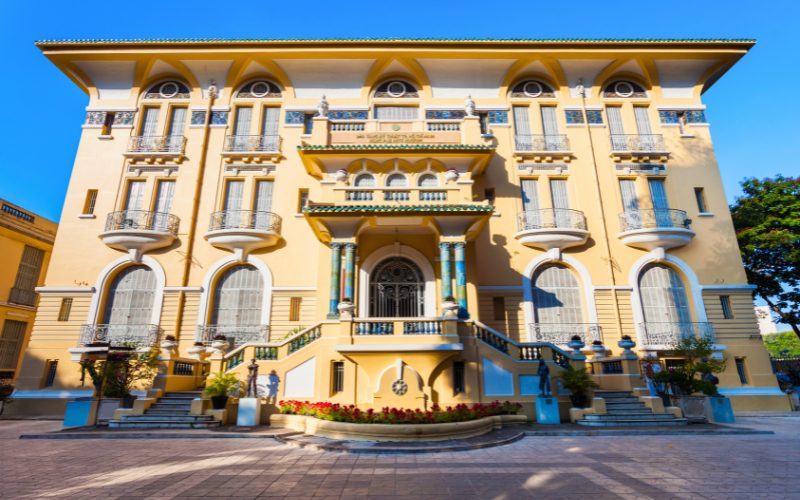
The outside of Ho Chi Minh City Fine Arts Museum
This museum is probably heaven for art lovers. Museum of Fine Arts Ho Chi Minh City was originally a mansion belonging to a wealthy Chinese merchant – Mr. Hoa during the colonial era. This museum is built based on the rules of Feng Shui which emphasizes the harmony between nature and people.
The Museum of Fine Arts Ho Chi Minh City consists of three floors: The first two contain numerous classical and contemporary works of Vietnamese and international artists while you can see art created from the 7th to the early 20th century on the third floor.
- Location: 97A Pho Duc Chinh Street, District 1
- Opening hours: 09:00 – 17:00. Close on Mondays.
- Entrance fee: VND 10,000/adult; VND3,000/child
War Remnants Museum
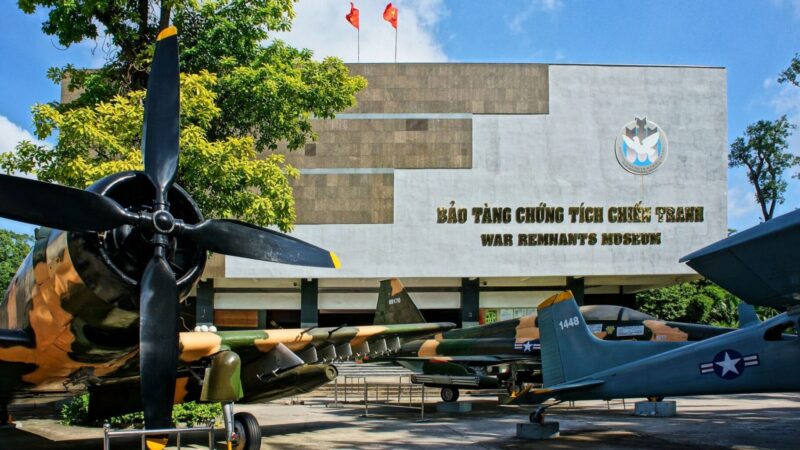
War Remnants Museum- Ho Chi Minh City
It is hard to ignore the scars of the Vietnam War when visiting this city. Formerly the US Information Service building, this place was established in 1975 after the war. The museum was originally called ‘Exhibition House for US and Puppet Crimes’, but the name was changed in 1996 for the sake of pacifism.
The museum contains a large number of photos and documents relating to war crimes. In particular, there is a large collection dedicated to the effects of Agent Orange: photos of deformed children, bottles containing chemical substances, etc. The museum’s courtyard is filled with tanks and helicopters used during the war.
- Location: 28 Vo Van Tan Street, District 3
- Opening hours: 07:30 – 11:45 & 13:30 – 17:15 from Monday to Sunday
- Entrance fee: VND 10,000
Dragon House Wharf
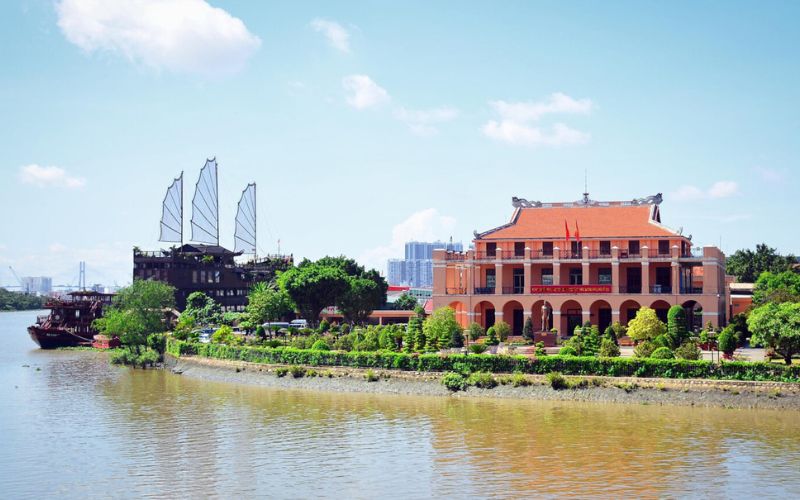
Nha Rong Wharf in Ho Chi Minh City
Nicknamed ‘The Dragon House Wharf’, the museum is located in a colonial building that was built in 1863. The museum takes its name from the fact that Nguyen Tat Thanh (former name Ho Chi Minh), at the age of 21, left Vietnam in 1911 and set sail on the French ship named Admiral Latouche Treville from this wharf. The museum contains many of his personal belongings, such as clothes, shoes, a radio, etc. You can see many pictures dedicated to his 30-year journey around the world.
- Location: 1 Nguyen Tat Thanh Street, Ward 12, District 4
- Opening hours: 7:30 – 11:30 & 13:30 – 17:00 from Monday to Sunday
- Entrance fee: VND 2,000
Jade Emperor Pagoda
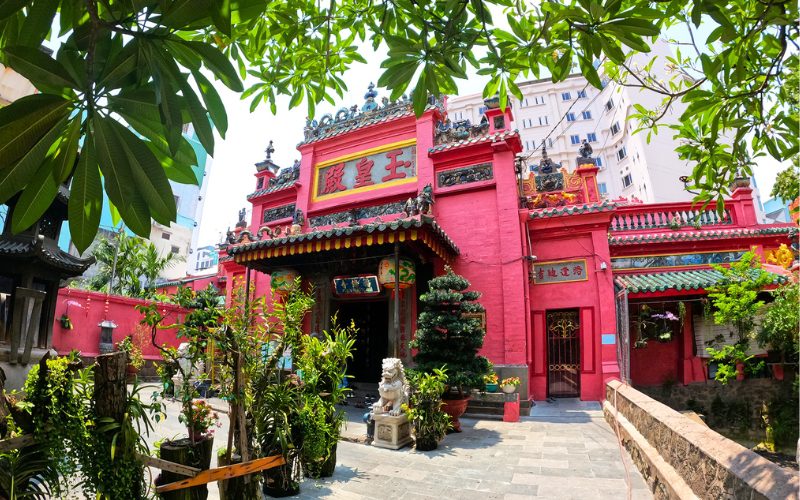
A View of Jade Emperor Pagoda
Built-in 1909, Jade Emperor Pagoda is a beautiful Chinese temple. The subtlety of its architecture and the imposing size of its Buddhist and Taoist statues make it one of the must-see pagodas of Ho Chi Minh City.
- Location: 73 Mai Thi Luu Street, Da Kao Ward, District 1
- Opening hours: 07:00 – 18:00, Monday to Sunday
- Entrance fee: Free
Back Beach (Bai Sau)
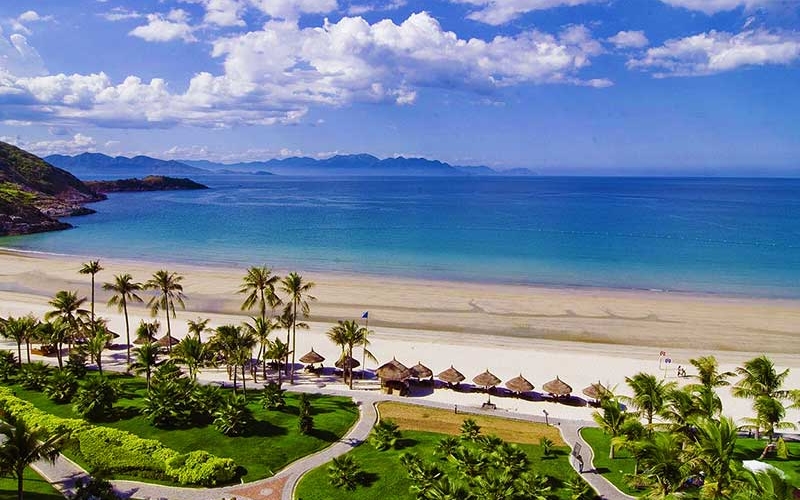
Back Beach of Vung Tau
Back Beach, the main tourist destination of Vung Tau, is one of the largest and most beautiful beaches in Vietnam. It has more than 10 km of fine sand and is always crowded with tourists on weekends and holidays. The fine white sand dunes, calm sea and vast casuarina forests immediately attract tourists. All the stress and fatigue of urban life will disappear when you come here, take a deep breath, feel the small vibrations on your skin and listen to the melodious tunes of the casuarina leaves. There are many entertainment and relaxation centers, including Paradis, an upgraded swimming and relaxation area, and a hotel system.
Location: Thuy Van Street, Vung Tau City, Ba Ria – Vung Tau Province
Bai Dau
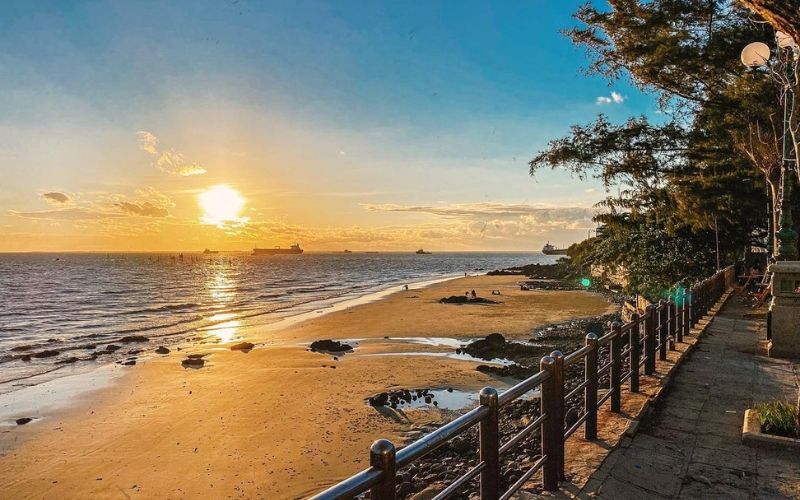
Bai Dau
This is a small beach located at the foot of Big Mountain, close to the center of Vung Tau, so it is very convenient to travel. It has a basin-shaped terrain surrounded by many rows of green trees, poetic cliffs, large rocky outcrops jutting out into the sea, ready to welcome the waves. In particular, Dau beach is famous for its wild natural beauty, which is not yet known to many people and has not been exploited much. Because of that, Dau beach “owns” a characteristic wild appearance that not every beach in Vung Tau has.
Location: Bai Dau Area, Ward 5, Vung Tau City, Ba Ria – Vung Tau Province
Statue of Jesus Christ
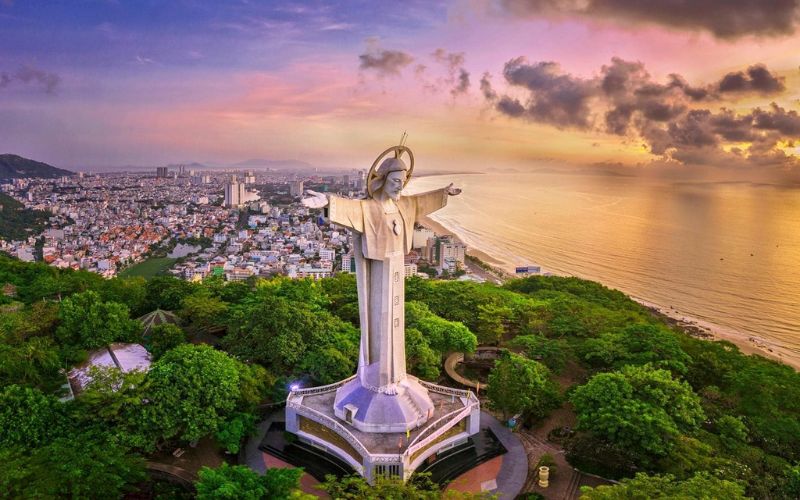
Statue of Jesus Christ
Statue of Jesus Christ sits on top of Nho Mountain with his arms outstretched, looking out to the East Sea. The project began in 1974 and was completed 20 years later. The statue is 32 meters long and 170 meters high above sea level. Inside the statue is hollow, with a spiral staircase of 129 steps leading up to the neck, shoulders and wrists, where four or five people can stand and enjoy the beautiful scenery around. Each hand is 2.2 meters wide, the middle finger is 1.1 meters long and each foot is 1.1 meters wide. This statue is similar to the statue in the city of Rio de Janeiro, Brazil.
- Location: Thuy Van Street, Ward 2, Vung Tau
- Opening hours: Daily from 7:00 AM to 5:00 PM; climbing inside is allowed from approximately 7:15 AM–12:00 PM and 2:00 PM–4:30 PM
- Entrance fee: Free
What to Eat in Ho Chi Minh City
It is in Saigon that the cuisine flourishes. The city will offer you an endless choice of culinary experiences. Here are some typical dishes for your visit to Saigon.
Com Tam Saigon – Broken rice with grilled pork
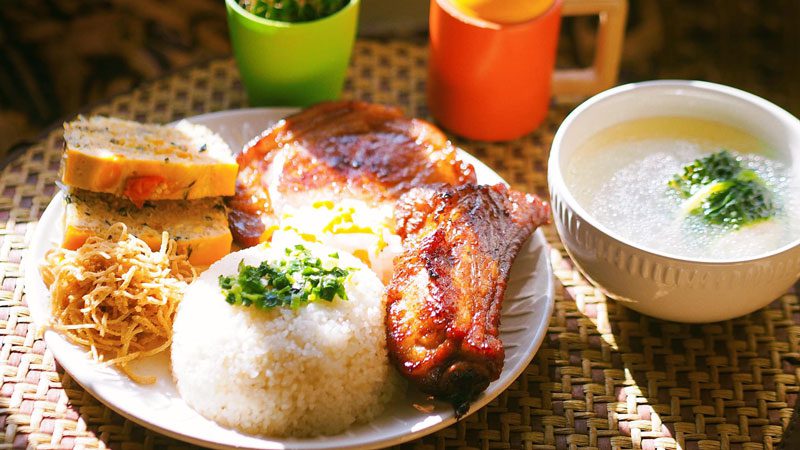
A tray of Com Tam in Ho Chi Minh City
Com tam is undoubtedly Saigon’s most iconic street food. The name “com tam” means broken rice in reference to grains damaged during harvesting, transportation, or milling that no one wanted. Broken rice is the base of the dish and is accompanied by pork and/or fried eggs and vegetables.
Hu tieu – Saigonese noodle soup
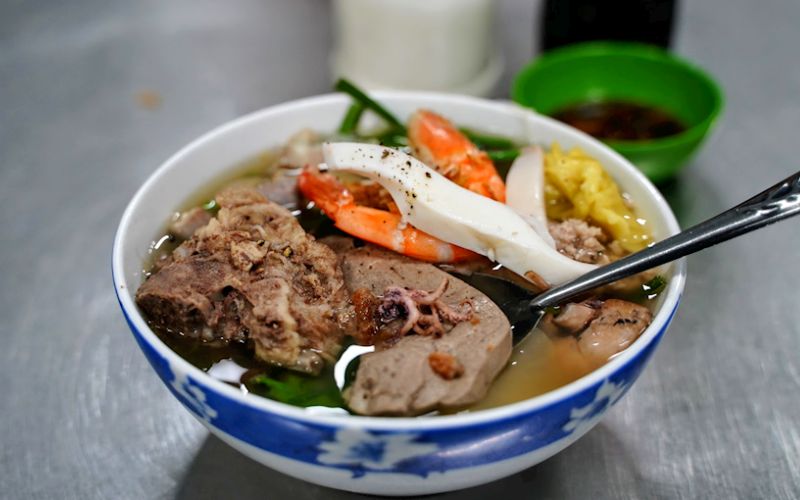
Hu Tieu – A popular dish in Saigon
Hu Tieu is a typical culinary specialty in Saigon like Pho in Hanoi. The main ingredients of this dish are rice noodles, simmered pork bone broth, pork meat, and intestine cooked with some onion, bean sprouts, and chives. Additionally, you can add chili sauce or a little lemon
Banh Xeo – Vietnamese pancake
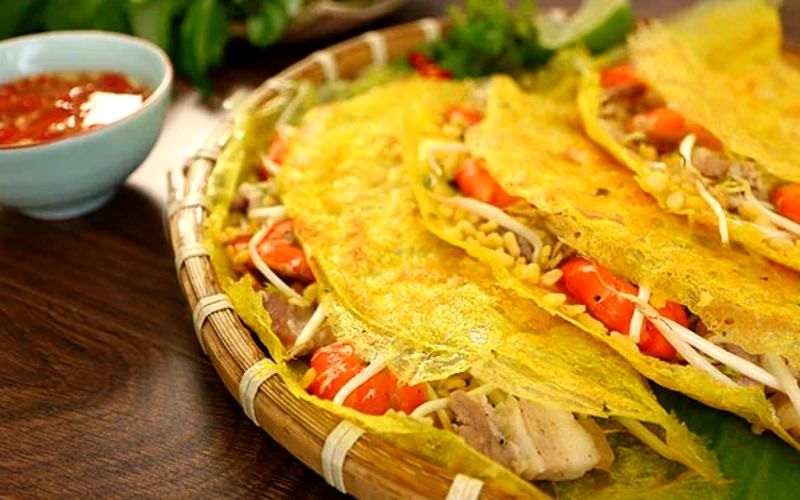
Banh xeo
Banh Xeo, or Vietnamese pancake, is a dish from Southern Vietnam. ‘Banh’ means cake and ‘xeo’ means sizzling. The pancake is made from rice flour, coconut milk, and turmeric which give it a brilliant yellow color. It is decorated with pork, shrimp, and various vegetables. These pancakes will tantalize your taste buds.
Banh mi – Vietnamese Baguettes
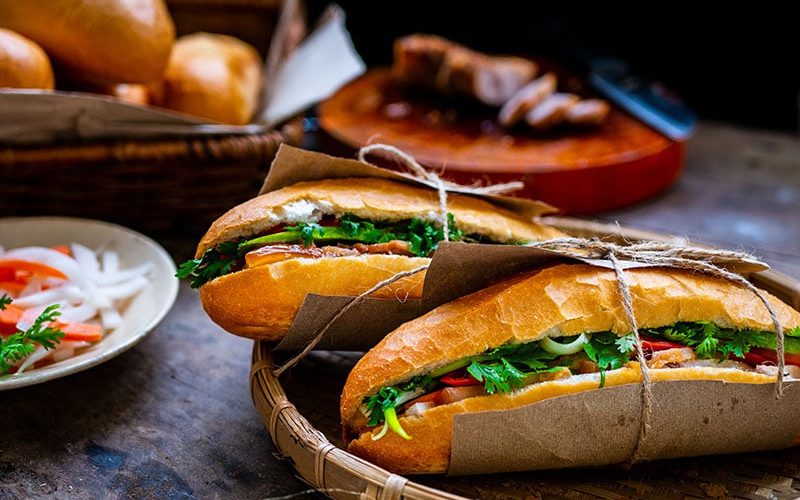
Banh mi -street food loved by every Vietnamese
Compared to other regions of the country, this Saigonnais sandwich is lighter, and crispier. Its filling consists of butter, soy sauce, young white radishes, thinly sliced carrots, cucumber, and coriander. Many stronger ingredients with local flavors can be added: cha ca (fried fish with turmeric and dill), cha lua (steamed pork), heo quay (roasted pork), pho mai (cow-type cheese who laughs), paté (pâté), xiu mai (various meatballs), boiled chicken, grilled pork tenderloin, ….
Snails
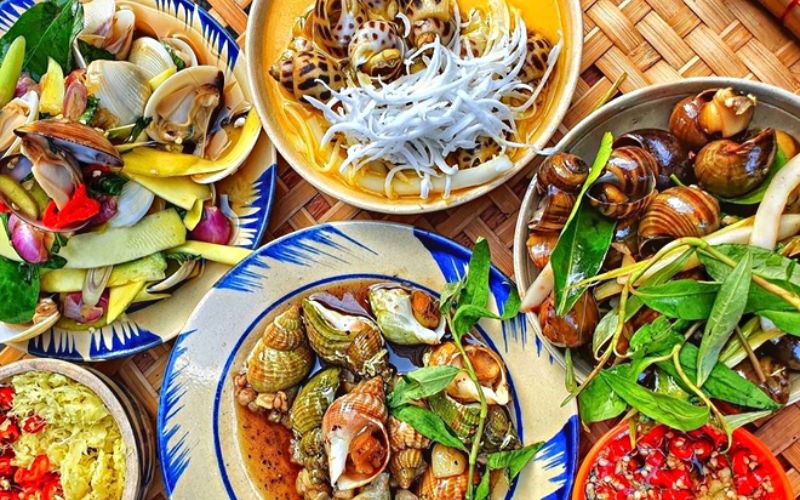
Snails – A dish you must try on Ho Chi Minh tour
It sounds scary, but it is a mouth-watering street food of this city. This dish even appears in Netflix’s documentary film about the most popular Asian food! There are many cooking methods for this dish – steaming, frying, sautéing, or grilling. It is served with several toppings such as lemongrass, coconut milk, chili sauce, scallions, and crushed peanuts.
Banh Khot (Vietnamese pancake)
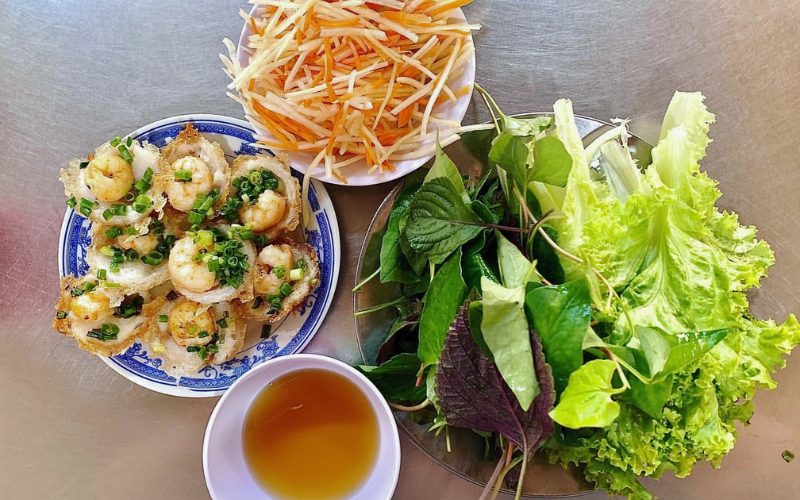
Banh Khot
Enjoy Banh Khot. These small round banh khot have a white crust, a red crust made from flour and curry powder, filled with seafood such as shrimp, squid, then topped with green onions and shrimp powder.
Stingray Hot Pot
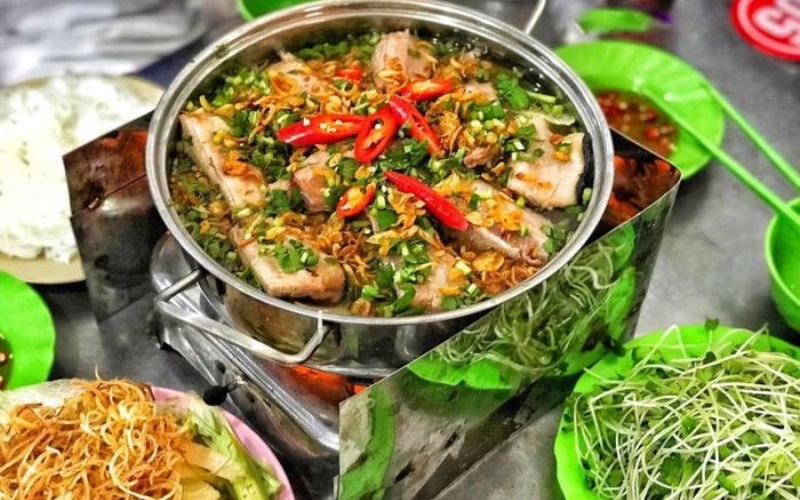
Stingray Hot Pot
Stingray Hot Pot is a delicious rustic dish in Vung Tau with its own unique flavor and ingredients. Stingray is a boneless fish, only soft cartilage, cut into bite-sized pieces and simmered to create a sweet broth before seasoning. Enjoy all the ingredients together to get the best bite.
Thanks to its prosperity in all fields, especially tourism, this city will give you a perfect chance to experience and explore many interesting things during your trip. Contact us for more information on planning your next vacation in Ho Chi Minh City!
Start planning your tailor-made tour with 1-1 help from our travel advisors.
- Plan your tailor - made trip with a local expert
- Book securely with money-back guarantee
- Travel stress-free with local 24/7 support

